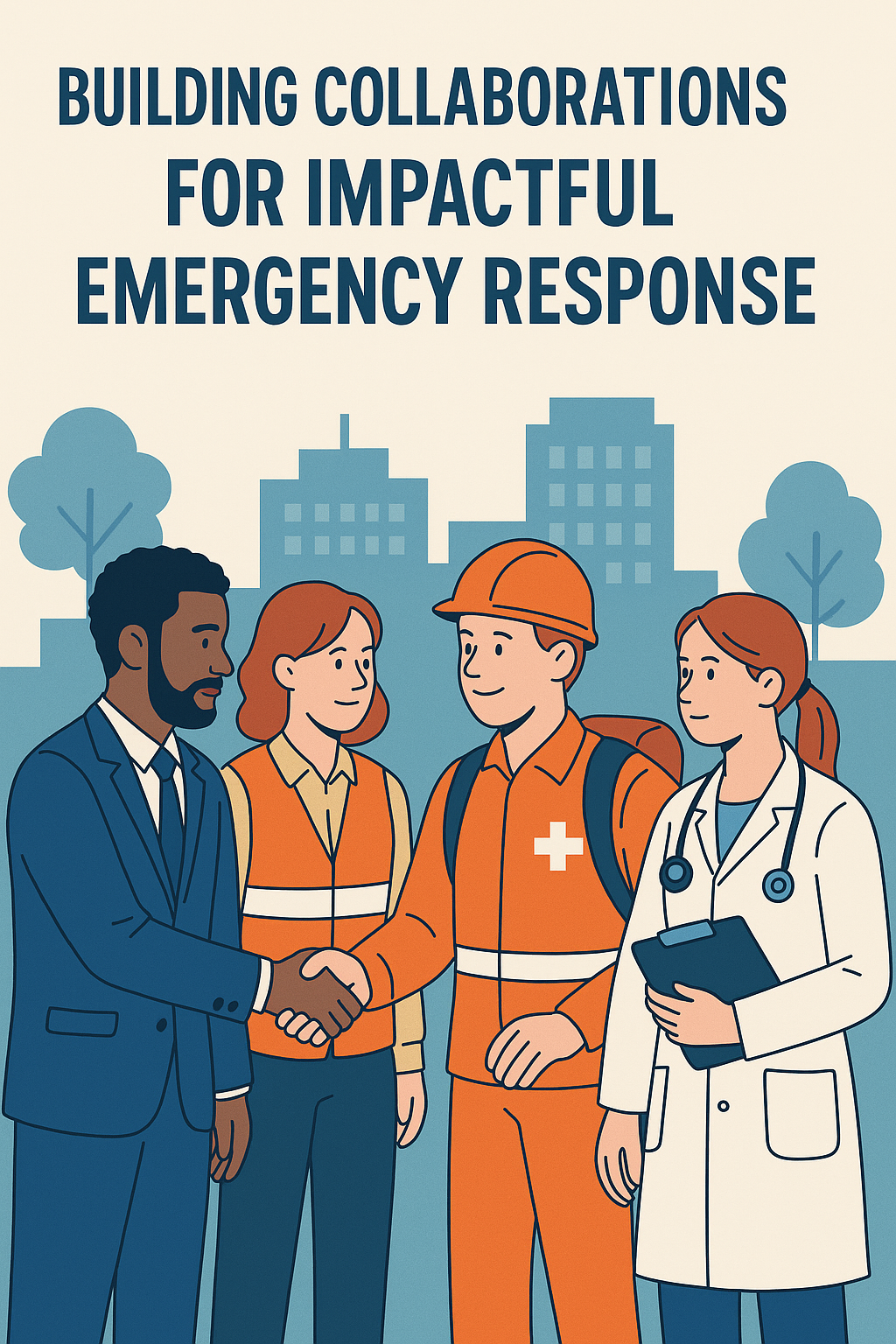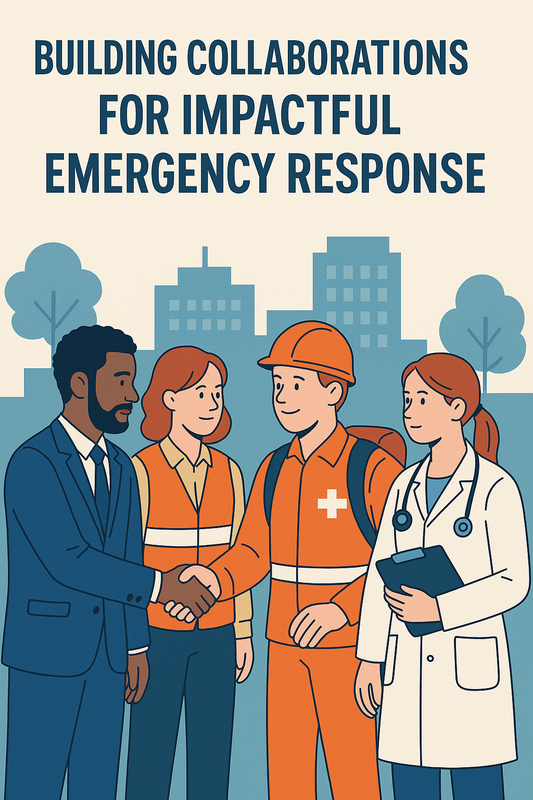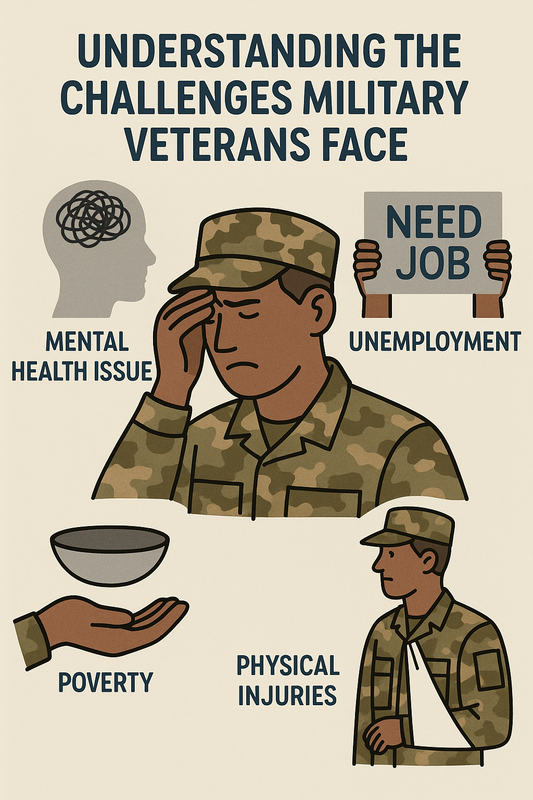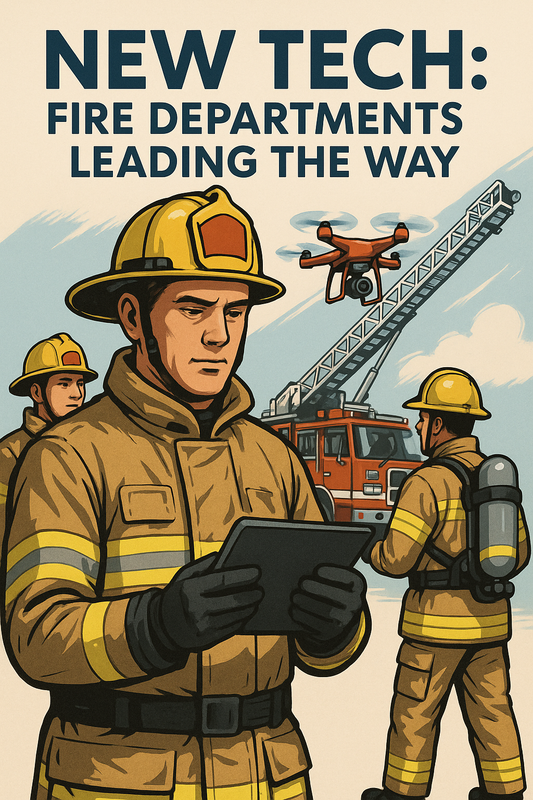
Building Collaborations for Impactful Emergency Response
Overview
Partnerships are crucial for effective emergency response, enabling resource sharing, better communication, and increased reach. Successful partnerships rely on shared goals, mutual trust, and clear roles. Types of partnerships include public-private collaborations, non-profit partnerships, and academic alliances. Strategies for building these partnerships involve networking, community engagement, and continuous communication. Despite challenges like diverse objectives and communication barriers, proactive solutions can enhance collaboration, ultimately leading to more effective emergency responses.
Frequently Asked Questions
1. Why are partnerships important in emergency response?
2. What are key components of successful partnerships?
3. What types of partnerships can enhance emergency response efforts?
4. How can organizations build and strengthen partnerships?
5. What challenges can arise in partnership building for emergency response?
In today's unpredictable world, effective emergency response is more critical than ever. Natural disasters, health crises, and other emergencies often leave communities in dire need of help. One of the key strategies for enhancing emergency response efforts is the creation of robust partnerships across various sectors. Whether it is between government agencies, non-profits, or the private sector, collaboration can significantly improve efficacy and reach. In this article, we will explore how to build and strengthen these vital partnerships, particularly in relation to emergency preparedness and response initiatives.
Understanding the Importance of Partnerships
Emergency responses can be complex, involving numerous stakeholders, each with unique challenges and resources. Creating effective partnerships allows for:
- Resource Sharing: Different organizations can pool their resources, expertise, and knowledge to tackle emergencies more proficiently.
- Better Communication: Clear lines of communication among partners can mitigate confusion and streamline response efforts.
- Increased Reach: Through partnerships, organizations can leverage networks to reach a broader audience and community.
Key Components of Successful Partnerships
Shared Goals and Objectives
For any partnership to thrive, all parties must have a clear understanding of shared goals and objectives. This alignment ensures that everyone is working towards the same outcome, minimizing conflicts and enhancing collaboration. It is vital to discuss and outline what each partner hopes to achieve from the partnership and create a unified vision.
Mutual Trust and Respect
Trust is the bedrock of any successful relationship, especially in high-stakes environments like emergency response. Organizations should prioritize building relationships based on mutual respect and understanding. This can be achieved through transparency and open communication, which fosters a culture of trust and reliability.
Clear Roles and Responsibilities
Defining clear roles and responsibilities within the partnership is crucial for accountability. Each partner must understand their specific contributions to the collaboration. A writer might create an engaging lightweight t-shirt design for promotional efforts while another organization ensures the logistics of distribution in emergency zones. By delineating roles, partners can work more efficiently and effectively, reducing overlaps or gaps in service provision.
Types of Partnerships to Consider
There are several types of partnerships that can enhance emergency response efforts:
Public-Private Partnerships (PPPs)
These collaborations between government agencies and private businesses can bring innovative solutions and funding to emergency response. Businesses can offer resources, expertise, and technology to bolster public sector efforts, making responses faster and more effective.
Non-Profit Collaborations
Non-profits often have established outreach programs and community engagement. Partnering with these organizations can improve trust and acceptance within communities, leading to more successful interventions. For instance, collaborating with a military charity that focuses on disaster responses can merge powerful resources with community-based initiatives.
Academic and Research Partnerships
Universities and research institutions can offer valuable insights and data that can enhance emergency response strategies. Collaborating with these entities can lead to innovative solutions based on the latest scientific findings and trends in disaster management.
Strategies for Building Partnerships
Networking Events
Organizing or attending networking events is a fantastic way to forge new partnerships. These events provide a platform for organizations to share their missions, learn about each other’s capabilities, and explore opportunities for collaboration. Whether you’re showcasing a lightweight t-shirt at a community event or sharing knowledge about local emergency services, these gatherings can spark valuable connections.
Engagement in Community Initiatives
Participating in local community initiatives can help organizations build rapport and trust among local leaders and citizens. Demonstrating commitment to community well-being can lay the groundwork for fruitful partnerships in times of crisis.
Continuous Communication and Relationship Management
Maintaining open lines of communication is critical even after partnerships are established. Regular check-ins, updates, and collaborative meetings can help reinforce relationships and address any emerging concerns. This ongoing communication fosters a sense of unity and shared purpose, even when challenges arise.
Leveraging Technology for Enhanced Collaboration
In an era of digital solutions, leveraging technology can significantly enhance partnership effectiveness. Tools such as project management software, communication apps, and social media can streamline operations and improve coordination among partners. For example, individuals can share information about available resources, updates on response efforts, or promotional initiatives such as custom lightweight t-shirts designed for fundraising and awareness.
Case Studies: Successful Partnership Models
Examining successful partnerships can provide valuable lessons for stakeholders looking to create impactful emergency response strategies. Here are two notable examples:
Operation USA
This organization collaborates with local nonprofits and community organizations to provide immediate relief during disasters. By linking resources directly to local needs, Operation USA showcases how partnerships can maximize aid and streamline responses. Their model highlights the critical role of on-the-ground partners in executing effective solutions.
National Response Framework (NRF)
The NRF is a U.S. government initiative that emphasizes the importance of collaboration across all levels of government and with the private sector. By establishing guidelines for shared response efforts, the NRF exemplifies a multi-sectoral approach to disaster management that has proven time and again to enhance effectiveness when crises arise.
Challenges and Solutions in Partnership Building
While partnership building is vital, it is not without challenges. Recognizing these obstacles can help organizations proactively devise solutions.
Diverse Objectives and Missions
Different organizations come with distinct goals and missions, which can sometimes lead to misunderstandings. To mitigate this challenge, open dialogue and discussions should occur at the beginning, ensuring all parties have a shared understanding of the collaboration’s purpose.
Resource Allocation Conflicts
Competing interests and resource allocation issues can arise during the partnership. Establishing clear agreements and expectations from the start can help manage resources effectively. Regular evaluations can also assist organizations to reconsider their contributions based on the evolving nature of emergencies.
Communication Barriers
Cultural differences and varying communication styles can create barriers in partnerships. Investing in training focused on communication skills and cultural competency can strengthen understanding and minimize misunderstandings among partners.
Take Action Now!
In a world where emergencies can arise at any moment, creating partnerships for effective emergency response is not just beneficial—it is essential. By embracing collaboration, organizations can leverage strengths, improve coordination, and positively impact their communities during crisis situations. From pooling resources to enhancing communication, the potential for better outcomes is immense.
Starting a conversation today could lead to tomorrow's impactful solutions. Reach out to potential partners, initiate networking opportunities, and engage with your community. By investing in partnerships now, we can collectively be better prepared for whatever challenges lie ahead. Together, we can ensure a swift, coordinated response to future emergencies, creating a more resilient and proactive society.
Linked Product

HELP EVERYONE REMAIN OPERATIONAL TEE
The "HELP EVERYONE REMAIN OPERATIONAL TEE" is an ideal choice for organizations focused on emergency response, combining comfort with practicality. Made from soft, pre-shrunk cotton, it ensures that team members can stay comfortable while remaining ready for action. Its lightweight design allows for ease of movement, making it suitable for long hours of work in critical situations.
View ProductCheck out another user's Shopify or Wix store by clicking this store link. Note that this is a promotional link, and we assume no liability for the content of the linked store.




